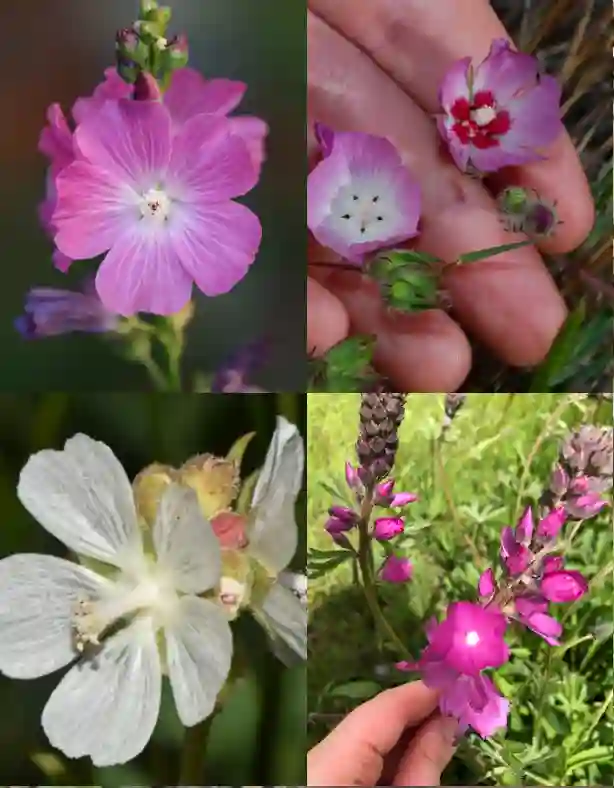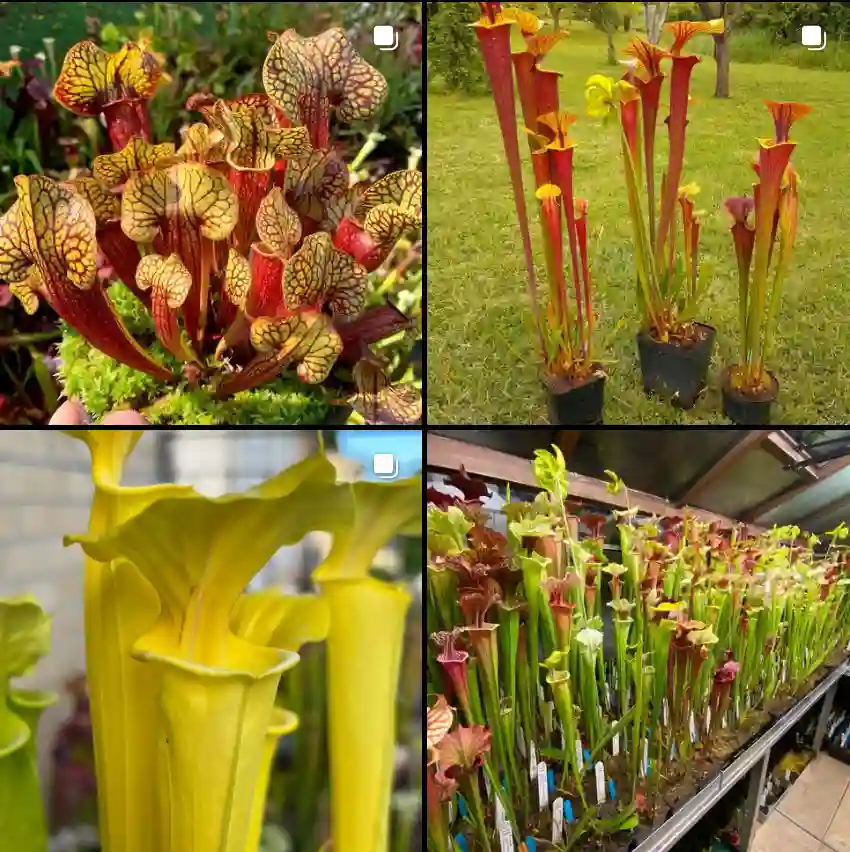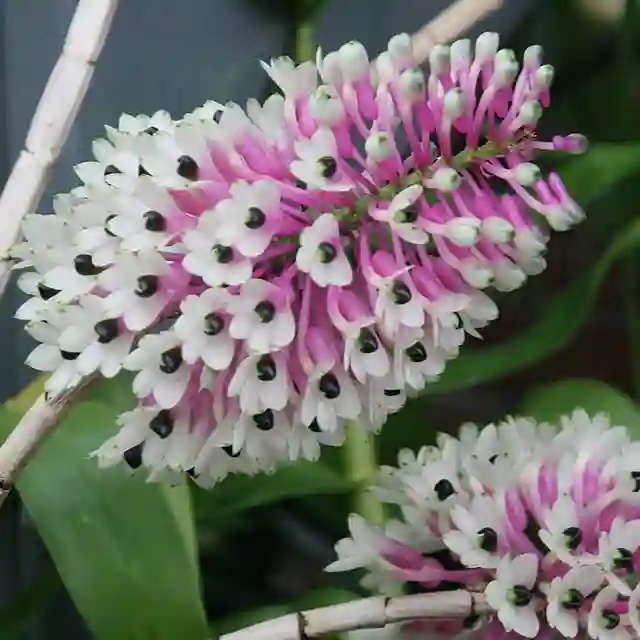
Exploring the Genus Iris: A Journey of Color, Form, and Resilience
When I think about my garden, one plant genus stands out for its captivating beauty and versatility: Iris. This incredible genus, with its intricate blooms and striking variety, has become a cornerstone of my gardening experience. Let me take you on a journey through the world of Iris and share why it holds a special place in my heart.
Understanding the Genus Iris
The genus Iris belongs to the family Iridaceae and includes over 300 species. These perennials are known for their sword-shaped leaves and showy flowers, which come in nearly every color imaginable. The name “Iris” derives from the Greek word for “rainbow,” an apt description of the plant’s dazzling palette.
From my experience, Iris plants thrive in diverse climates and soil conditions, making them an adaptable choice for gardeners. Whether in boggy areas, rocky landscapes, or traditional garden beds, there’s likely a species or hybrid that will flourish.
Iris species
- Iris acutiloba C.A.Mey.
- Iris adriatica Trinajstić ex Mitic
- Iris afghanica Wendelbo
- Iris aitchisonii (Baker) Boiss.
- Iris alberti Regel
- Iris albomarginata R.C.Foster
- Iris alexeenkoi Grossh.
- Iris almaatensis Pavlov
- Iris × ampliflora Y.E.Xiao, F.Y.Yu & X.F.Zhou
- Iris anguifuga Y.T.Zhao & X.J.Xue
- Iris antilibanotica Dinsm.
- Iris aphylla L.
- Iris arenaria Waldst. & Kit.
- Iris aschersonii Foster
- Iris assadiana Chaudhary, G.Kirkw. & C.Weymouth
- Iris atrofusca Baker
- Iris atropurpurea Baker
- Iris attica Boiss. & Heldr.
- Iris aucheri (Baker) Sealy
- Iris auranitica Dinsm.
- Iris austrotschatkalica Tojibaev, F.Karimov & Turgunov
- Iris avromanica Rukšāns
- Iris bakeriana Foster
- Iris baldshuanica O.Fedtsch.
- Iris barbatula Noltie & K.Y.Guan
- Iris barnumiae Foster & Baker
- Iris basaltica Dinsm.
- Iris benacensis A.Kern. ex Stapf
- Iris bicapitata Colas.
- Iris × binata Schur
- Iris bismarckiana E.Dammann & Sprenger
- Iris bloudowii Ledeb.
- Iris boissieri Henriq.
- Iris bostrensis Mouterde
- Iris bracteata S.Watson
- Iris brevicaulis Raf.
- Iris × brzhezitzky Grossh.
- Iris bucharica Foster
- Iris bulleyana Dykes
- Iris bungei Maxim.
- Iris cabulica Gilli
- Iris × caeciliae Grossh.
- Iris calabra (N.Terracc.) Peruzzi
- Iris calcicola Z.C.Lu, Z.P.Huang & Yan Liu
- Iris camillae Grossh.
- Iris capnoides (Vved.) T.Hall & Seisums
- Iris carterorum B.Mathew & Wendelbo
- Iris cathayensis Migo
- Iris caucasica M.Bieb.
- Iris cedreti Dinsm. ex Chaudhary
- Iris chrysographes Dykes
- Iris chrysopetala Sennikov, F.O.Khass. & Pulatov
- Iris chrysophylla Howell
- Iris clarkei Baker ex Hook.f.
- Iris colchica Kem.-Nath.
- Iris collettii Hook.f.
- Iris confusa Sealy
- Iris cristata Aiton
- Iris crocea Jacquem. ex R.C.Foster
- Iris cuniculiformis Noltie & K.Y.Guan
- Iris curvifolia Y.T.Zhao
- Iris cycloglossa Wendelbo
- Iris dabashanensis C.A.Wilson
- Iris damascena Mouterde
- Iris danfordiae (Baker) Boiss.
- Iris darwasica Regel
- Iris decora Wall.
- Iris delavayi Micheli
- Iris dichotoma Pall.
- Iris doabensis B.Mathew
- Iris dolichosiphon Noltie
- Iris domestica (L.) Goldblatt & Mabb.
- Iris douglasiana Herb.
- Iris drepanophylla Aitch. & Baker
- Iris edomensis Sealy
- Iris ensata Thunb.
- Iris farashae Güner
- Iris farreri Dykes
- Iris ferdowsii Joharchi & Memariani
- Iris fernaldii R.C.Foster
- Iris filifolia Boiss.
- Iris × flexicaulis Small
- Iris florentina L.
- Iris foetidissima L.
- Iris formosana Ohwi
- Iris forrestii Dykes
- Iris fosteriana Aitch. & Baker
- Iris fulva Ker Gawl.
- Iris × fulvala Dykes
- Iris furcata M.Bieb.
- Iris furseorum T.Hall & Seisums
- Iris galatica W.Irving
- Iris gatesii Foster
- Iris × germanica L. Plant FAQs: Bearded Iris – Iris × Germanica
- Iris giganticaerulea Small
- Iris glaucescens Bunge
- Iris goniocarpa Baker
- Iris gracilipes A.Gray
- Iris graeberiana Sealy
- Iris graminea L.
- Iris grant-duffii Baker
- Iris griffithii Baker
- Iris grossheimii Woronow ex Grossh.
- Iris halophila Pall.
- Iris hartwegii Baker
- Iris haussknechtii Bornm. ex Baker
- Iris haynei Baker
- Iris hellenica Mermygkas
- Iris henryi Baker
- Iris heracleana (J.Mart.Rodr. & M.B.Crespo) Fennane
- Iris hermona Dinsm.
- Iris heweri Grey-Wilson & B.Mathew
- Iris hexagona Walter
- Iris hippolyti (Vved.) Kamelin
- Iris histrio Rchb.f.
- Iris histrioides (G.F.Wilson) S.Arn.
- Iris hoogiana Dykes
- Iris hookeri Penny ex G.Don
- Iris hookeriana Foster
- Iris humilis Georgi
- Iris hymenospatha B.Mathew & Wendelbo
- Iris iberica Steven
- Iris imbricata Lindl.
- Iris inconspicua (Vved.) T.Hall & Seisums
- Iris innominata L.F.Hend.
- Iris ivanovae Doronkin
- Iris japonica Thunb.
- Iris juncea Poir.
- Iris junonia Schott
- Iris junzifengensis S.P.Chen, Xin Y.Chen & Liang Ma
- Iris kamelinii Alexeeva
- Iris kashmiriana Baker
- Iris kemaonensis Wall. ex D.Don
- Iris × ketzkhovelii G.N.Matveev
- Iris khassanovii Tojibaev & Turginov
- Iris kirkwoodiae Chaudhary
- Iris × kobasensis Prodan
- Iris kobayashii Kitag.
- Iris × koenigii Sosn.
- Iris kolpakowskiana Regel
- Iris kopetdagensis Vved.
- Iris koreana Nakai
- Iris korolkowii Regel
- Iris kurbanovii F.O.Khass. & Rakhimova
- Iris kuschakewiczii B.Fedtsch.
- Iris kuschkensis Grey-Wilson & B.Mathew
- Iris lactea Pall.
- Iris lacustris Nutt.
- Iris laevigata Fisch.
- Iris latifolia (Mill.) Voss
- Iris latistyla Y.T.Zhao
- Iris lazica Albov
- Iris leptophylla Lingelsh. ex H.Limpr.
- Iris leptorrhiza (Vved.) Vved.
- Iris lineata Foster ex Regel
- Iris linifolia (Regel) O.Fedtsch.
- Iris linifoliiformis (Khalk.) Tojibaev & Turginov
- Iris loczyi Kanitz
- Iris lokiae Alexeeva
- Iris longipetala Herb.
- Iris longiscapa Ledeb.
- Iris lortetii Barbey
- Iris ludwigii Maxim.
- Iris lutescens Lam.
- Iris lycotis Woronow
- Iris macrosiphon Torr.
- Iris maculata Baker
- Iris magnifica Vved.
- Iris mandshurica Maxim.
- Iris maracandica (Vved.) Wendelbo
- Iris mariae Barbey
- Iris marivanica Rukšāns
- Iris marsica I.Ricci & Colas.
- Iris masiae Leichtlin ex Dykes
- Iris meda Stapf
- Iris microglossa Wendelbo
- Iris milesii Baker ex Foster
- Iris minutoaurea Makino
- Iris missouriensis Nutt.
- Iris munzii R.C.Foster
- Iris mzchetica Rodion.
- Iris nantouensis S.S.Ying
- Iris narbutii O.Fedtsch.
- Iris narcissiflora Diels
- Iris narynensis O.Fedtsch.
- Iris × nelsonii Randolph
- Iris neoensata Y.N.Lee
- Iris neosetosa Y.N.Lee
- Iris × neumayeri Janch. ex Holub
- Iris nicolai (Vved.) Vved.
- Iris nigricans Dinsm.
- Iris notha M.Bieb.
- Iris nusairiensis Mouterde
- Iris odaesanensis Y.N.Lee
- Iris odontostyla B.Mathew & Wendelbo
- Iris orchioides Carrière
- Iris orientalis Mill.
- Iris orjenii Bräuchler & Cikovac
- Iris oxypetala Bunge
- Iris palaestina (Baker) Barbey
- Iris pallida Lam.
- Iris pamphylica Hedge
- Iris paradoxa Steven
- Iris paropamisensis T.Hall & Seisums
- Iris parvula (Vved.) Sennikov
- Iris perrieri Simonet ex N.Service
- Iris persica L.
- Iris peshmeniana Güner & T.Hall
- Iris petrana Dinsm.
- Iris petri F.O.Khass., Rakhimova & Achilova
- Iris planifolia (Mill.) T.Durand & Schinz
- Iris platyptera B.Mathew & Wendelbo
- Iris polakii Stapf
- Iris pontica Zapał.
- Iris popovii (Vved.) Vved.
- Iris porphyrochrysa Wendelbo
- Iris postii Mouterde
- Iris potaninii Maxim.
- Iris prismatica Pursh
- Iris proantha Diels
- Iris probstii C.A.Wilson
- Iris psammocola Y.T.Zhao
- Iris pseudacorus L.
- Iris pseudocapnoides Rukšāns
- Iris pseudocaucasica Grossh.
- Iris pseudomeda Salimb. & H.Saeidi
- Iris pseudonotha Galushko
- Iris pseudopumila Tineo
- Iris pskemensis Rukšāns
- Iris pumila L.
- Iris purdyi Eastw.
- Iris qinghainica Y.T.Zhao
- Iris ramsayi T.Hall & B.Mathew
- Iris regis-uzziae Feinbrun
- Iris reichenbachiana Klatt
- Iris reichenbachii Heuff.
- Iris relicta Colas.
- Iris reticulata M.Bieb.
- Iris revoluta Colas.
- Iris × robusta E.S.Anderson
- Iris rodionenkoi (Lazkov & Naumenko) T.Hall
- Iris rosenbachiana Regel
- Iris rossii Baker
- Iris rudolphii F.O.Khass., Esankulov & Achilova
- Iris ruthenica Ker Gawl.
- Iris rutherfordii J.Mart.Rodr., P.Vargas, Carine & Jury
- Iris sabina N.Terracc.
- Iris × sancti-cyri J.Rousseau
- Iris sanguinea Hornem.
- Iris sari Schott ex Baker
- Iris savannarum Small
- Iris scariosa Willd. ex Link
- Iris schachtii Markgr.
- Iris schelkownikowii (Fomin) Fomin
- Iris schmakovii Alexeeva
- Iris × seminaturalis Niketić, Tomovic & Siljak-Yak.
- Iris serotina Willk.
- Iris setina Colas.
- Iris setosa Pall. ex Link
- Iris × setosothungbergii H.Koidz. ex T.Shimizu
- Iris sibirica L. Plant FAQs: Iris Sibirica – Siberian Iris
- Iris × sinistra Sosn.
- Iris sintenisii Janka
- Iris sisianica Zubov & Bondarenko
- Iris songarica Schrenk ex Fisch. & C.A.Mey.
- Iris sophenensis (Foster) B.Mathew & Güner
- Iris speculatrix Hance
- Iris sprengeri Siehe
- Iris spuria L.
- Iris staintonii H.Hara
- Iris statellae Tod.
- Iris stenophylla Hausskn. ex Baker
- Iris stocksii (Baker) Boiss.
- Iris stolonifera Maxim.
- Iris straussii Leichtlin ex Micheli
- Iris suaveolens Boiss. & Reut.
- Iris subdecolorata Vved.
- Iris subdichotoma Y.T.Zhao
- Iris susiana L.
- Iris svetlanae (Vved.) T.Hall & Seisums
- Iris swensoniana Chaudhary, G.Kirkw. & C.Weymouth
- Iris tadshikorum (Vved.) Vved.
- Iris taochia Woronow ex Grossh.
- Iris tarhunensis (Borzì & Mattei) Pamp.
- Iris tectorum Maxim.
- Iris tenax Douglas ex Lindl.
- Iris tenuifolia Pall.
- Iris tenuis S.Watson
- Iris tenuissima Dykes
- Iris × thompsonii R.C.Foster
- Iris thoroldii Baker ex Hemsl.
- Iris tibetica (Dykes) Bolt.
- Iris tigridia Bunge ex Ledeb.
- Iris timofejewii Woronow
- Iris tingitana Boiss. & Reut.
- Iris tridentata Pursh
- Iris tschandalasica Urusov
- Iris tubergeniana Foster
- Iris tuberosa L.
- Iris typhifolia Kitag.
- Iris unguicularis Poir.
- Iris uniflora Pall. ex Link
- Iris urmiensis Jekyll & E.T.Cook
- Iris variegata L.
- Iris vartanii Foster
- Iris ventricosa Pall.
- Iris verna L.
- Iris versicolor L.
- Iris vicaria Vved.
- Iris vicariopsis T.Hall
- Iris victoris F.O.Khass., Khuzhan. & Rakhimova
- Iris × vinicolor Small
- Iris × violipurpurea Small
- Iris virginica L.
- Iris vorobievii N.S.Pavlova
- Iris vvedenskyi Nevski ex Woronow & Popov
- Iris wallisiae T.Hall & Seisums
- Iris warleyensis Foster
- Iris wattii Baker ex Hook.f.
- Iris wendelboi Grey-Wilson & B.Mathew
- Iris westii Dinsm.
- Iris willmottiana Foster
- Iris wilsonii C.H.Wright
- Iris winkleri Regel
- Iris winogradowii Fomin
- Iris xanthochlora Wendelbo
- Iris xiphium L.
- Iris yebrudii Dinsm. ex Chaudhary
- Iris yedisuensis Yıld. & Kılıç
- Iris zagrica B.Mathew & Zarrei
- Iris zaprjagajevii (N.V.Abramov) T.Hall & Seisums
- Iris zetterlundii Rukšāns
When do irises bloom?
Irises are one of my absolute favorite signs of spring! Here in the Pacific Northwest, we get to enjoy the earliest dwarf irises around March, but the real stunners are the tall bearded varieties. Those beauties typically bloom from mid-May into early June, although last year we had an exceptionally warm spring, and mine decided to put on a show a few weeks early. I love their ruffled petals and how the colors practically glow in the vibrant spring sunshine. I always feel a little thrill when I spot the first blooms and know that summer is just around the corner.
When to cut back irises?
Cutting back irises is one of those necessary garden chores that I don’t particularly love. After those gorgeous blooms fade, I always deadhead the spent flower stalks right away to tidy things up. Then, I let the leaves do their work of gathering sunlight until they start to yellow and wither, usually by mid-summer. I try to do a major cutback at that point to improve airflow and help prevent disease. But the really important cutback is in the fall, after the first frost. I cut everything down to the ground to get rid of any potential hiding places for pests and disease over the winter.
Are irises poisonous to cats?
Unfortunately, irises are indeed poisonous to our feline companions. It’s really frustrating because irises are so beautiful! But all parts of the plant, especially the underground rhizomes (basically, the roots), contain substances that can irritate a cat’s digestive system. If my cats get into some irises, they usually throw up or have diarrhea, which is no fun for anyone involved. I try to be really careful not to plant irises where my curious kitties can reach them or to bring cut blooms inside where they might be tempted to take a taste.
Are irises poisonous to dogs?
Sadly, yes, irises are considered toxic to dogs too. While they’re usually not deadly, they can still make your pup pretty sick. All parts of the plant contain compounds that can irritate a dog’s digestive system and sometimes even their skin. I’ve heard of dogs drooling, vomiting, or having diarrhea after chewing on irises. For me, keeping them out of areas where my dog plays is important so I don’t have to worry about any accidental snacking.
How to grow irises?
Growing irises has to be one of the most satisfying gardening experiences! They’re surprisingly easy-going plants. The key is to get those thick, fleshy rhizomes planted in the right way. You want them to be partially exposed to the sunlight, with just the roots buried beneath the soil. I always plant mine in the fall so that they have plenty of time to establish before the following spring’s blooms. Other than that, you mainly need to make sure they get enough sun and water, and you’ll be rewarded with gorgeous flowers come springtime! For me, the biggest challenge is waiting for the blooms after planting new irises – I get so impatient!
How to care for irises?
I find irises to be remarkably carefree considering how beautiful their blooms are! The biggest thing is to give them a sunny spot with well-drained soil. Soggy conditions can lead to rot problems, so I like to plant them in raised beds if my soil is on the heavier side. Other than the occasional deep watering during dry spells, I pretty much leave them alone until after their spring show. Then, I do some maintenance like deadheading spent blooms, cleaning up dead leaves periodically, and dividing them every few years to keep them blooming their best.
Do irises need full sun?
For the most part, irises are definitely sun-lovers! They generally need at least six hours of direct sunlight each day to thrive. That’s the key to getting those stunning blooms. I’ve even noticed that mine produce more flowers in years when we have particularly sunny springs and summers. There are a few shade-tolerant iris varieties out there, but if you want the classic tall bearded irises or an abundance of colorful blooms, it’s all about finding the sunniest spot in your garden!
Do deer eat irises?
Thankfully, irises are generally pretty deer-resistant, which is a major win for me since we have a ton of deer roaming our neighborhood. They seem to dislike the smell and texture of the leaves, so they usually bypass irises in favor of tastier plants. I’ve only ever had deer bother my irises once, and that was during a super dry winter when they were probably desperate for food. So, while I don’t consider irises to be 100% deer-proof, they’re definitely a great choice for areas where deer are a problem.
What do irises smell like?
Irises don’t have a strong, in-your-face fragrance like some flowers do, but they have a subtle, elegant scent that I find really lovely. The smell can vary a bit depending on the specific variety, but I often notice a delicate sweetness reminiscent of vanilla mixed with a powdery, almost cosmetic-like scent. To me, it’s a clean and slightly floral fragrance that’s very unique. The scent isn’t strong enough to carry in the air, so I like to take the time to lean in and really inhale whenever I walk past blooming irises.
When can i transplant irises?
The best time to transplant irises depends on your climate and the type of iris. Here in the Pacific Northwest, with mild winters and warm summers, I’ve found that late summer to early fall is the sweet spot. The weather is usually warm but not scorching, and the irises have some time to establish themselves before winter.
This window gives the irises a chance to develop a healthy root system before the cold weather hits. That way, they’ll be nice and strong come spring and ready to put on a spectacular show.
Why are my irises not blooming?
Ah, the frustration of bloomless irises! I’ve been there, and it’s always a bit of a puzzle to figure out. Some of the most common reasons for a lack of flowers include:
- Not enough sun: Irises are sun worshippers! If they’re getting less than six hours of direct sunlight each day, they might not have enough energy to bloom.
- Overcrowding: Irises like a little elbow room. If those rhizomes get too packed together, they might struggle to produce flowers.
- Too much fertilizer: This is less common, but an excess of fertilizer, especially nitrogen, can sometimes cause irises to put all their energy into leafy growth instead of flowers.
- Pests or diseases: Certain pests and diseases can attack the rhizomes and weaken them, making it harder for the plant to bloom.
- Planting too deep: The rhizomes should sit just slightly under or at the surface of the soil. If they’re buried too deep, they might not have the resources to push out blooms.
It can be tough to pinpoint the exact culprit sometimes, but it’s definitely a case worth investigating if you’re missing those beautiful blooms!
When to fertilize irises?
I fertilize my irises twice a year for the best results. The first feeding is in early spring, ideally about a month or two before they’re due to bloom. This gives them a boost of nutrients to encourage strong flower development. I use a balanced fertilizer with a low nitrogen content, like a 6-10-10 mix, as too much nitrogen can promote leafy growth at the expense of flowers. The second feeding comes right after they finish blooming. This helps the plants replenish their energy stores and focus on forming strong rhizomes that will lead to beautiful blooms the following year.
Are irises edible?
Unfortunately, most irises are not edible. The entire plant contains compounds that can be irritating or cause digestive issues for humans and animals. Some older resources suggest using the dried rhizomes (roots) of certain Iris varieties to add a spicy, ginger-like flavor to foods or drinks. However, it’s important to exercise extreme caution before trying this due to the potential for misidentification and the risk of toxicity associated with irises.
Overall, it’s best to admire irises for their gorgeous flowers and leave the snacking to other parts of the garden!
Can irises be grown in pots?
Absolutely! Irises can definitely thrive in pots, making them a great option for gardeners with limited space or those who want to enjoy their blooms up close. Dwarf iris varieties are particularly well-suited for containers, but even some of the taller bearded varieties can perform well with the right care. When choosing a pot, make sure it’s big enough to accommodate the iris’s root system comfortably and has good drainage holes. A well-draining potting mix, plenty of sunshine, and regular watering are key to keeping potted irises happy and blooming beautifully.
Iris vs Lily
Lilies, to me, are the delicate princesses of the garden. Their petals are soft, almost translucent, and they come in such an ethereal range of colors. Irises, on the other hand, are the bold, dramatic divas. Their petals are thick and velvety, and they command attention with their striking patterns and rich hues. I find myself drawn to the elegance of lilies, but I can’t deny the raw power of an iris in full bloom.
Iris vs Bearded Iris
I’ve always had a soft spot for the bearded iris. There’s something almost mischievous about that little tuft of hairs on their lower petals. They add a touch of whimsy to a flower that is otherwise quite stately. Regular irises are beautiful in their own right, but they lack that playful element that makes the bearded variety so endearing.
Iris vs Gamera
Gamera is a giant, fire-breathing monster, not a flower. There’s no comparison to be made there.
Iris vs Fire Iris
I’ve never seen a fire iris, but the name conjures up images of a fiery, passionate bloom. Irises are already known for their vibrant colors, so a fire iris must be something truly spectacular. I’d love to see one someday.
Iris vs Gladiolus
Gladioli are tall and imposing, like soldiers standing at attention. They’re beautiful in their own way, but they lack the complexity and depth of an iris. Irises, on the other hand, have a mysterious allure that keeps me coming back for more.
Iris vs Orchid
Orchids are undoubtedly exotic and fascinating, but they can be a bit high-maintenance for my taste. Irises, while still requiring some attention, are generally more forgiving. Plus, I find the iris’s form to be more classic and elegant.
Iris vs Daylily
Daylilies are cheerful and dependable, but they lack the drama and sophistication of an iris. They’re like the friendly neighbor next door, while irises are the glamorous movie star.
If i die, water my plants!



